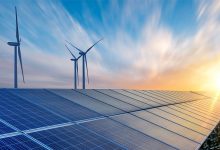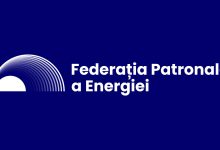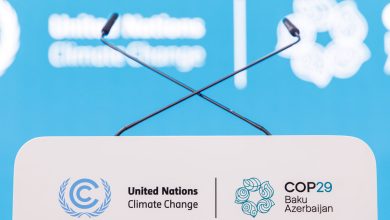RWEA Becomes a Member of the European Clean Hydrogen Alliance
The European Clean Hydrogen Alliance aims at an ambitious development of hydrogen-based technologies by 2030, bringing together the renewable sector, low-carbon hydrogen production, industrial consumers, mobility, and other sectors, as well as hydrogen transmission and distribution. Through this alliance, the European Union aims to strengthen its position as global leader in this field, to support the EU target of reaching carbon neutrality by 2050.
RWEA – Romania Wind Energy Association, together with its members, actively supports the implementation of renewable hydrogen production projects in Romania, to allow the sustainable transformation of the energy sector and the integration of a greater renewable energy capacity. “In these moments of planning the sustainable economic recovery, we believe that renewable hydrogen must be an essential part of the solution to reaching carbon neutrality by 2050 and we are prepared to promote its role, as well as synergies with the renewable energy sector,” said RWEA representatives.
Hydrogen is a key enabler to achieve the objectives of the European Green Deal and Europe’s clean energy transition. Hydrogen has several energy and non-energy uses, from storing renewable energy to fuelling heavy transport, and as energy and feedstock in energy-intensive industry, such as in the steel or chemical sectors.
Most importantly, hydrogen is climate friendly as it does not emit any carbon dioxide when used. It thus offers a solution to decarbonise industrial processes and economic sectors where reducing carbon emissions is both urgent and hard to achieve.
The European Clean Hydrogen Alliance brings together industry, national and local public authorities, civil society, and other stakeholders. It is strongly anchored in the hydrogen value chain, covering renewable and low-carbon hydrogen from production via transmission to mobility, industry, energy, and heating applications.
The alliance is open to all public and private actors with activities for renewable or low-carbon hydrogen that are ready to actively contribute to the objectives set out in the declaration of the alliance. To join the alliance, an organisation must sign the declaration, committing it to the alliance’s shared vision and to contributing to its operational work.
As investment cycles in the clean energy sector run for about 25 years, the time to act is now. The European Clean Hydrogen Alliance will help build up a robust pipeline of investments.
The alliance will establish an investment agenda and support the scaling up of the hydrogen value chain across Europe. The alliance will play a crucial role in facilitating and implementing the actions of the new European hydrogen strategy and in particular its investment agenda. An industry blueprint estimates investments of EUR 430 billion until 2030. It will also be important in the context of the new energy system integration strategy.
The alliance should support scaling up production and demand for renewable and low-carbon hydrogen, coordinate action, and provide a broad forum to engage civil society.
Hydrogen accounts for less than 1% of Europe’s present energy consumption and is mainly produced through highly carbon-emitting pathways, known as ‘grey’ hydrogen, and used as feedstock in sectors, such as fertilisers and refineries.
However, clean hydrogen is expected to play a key role in the decarbonisation of sectors where other alternatives might not be feasible or be more expensive. This includes heavy-duty and long-range transport and energy-intensive industrial processes.
Renewable hydrogen and decarbonisation
Renewable hydrogen, produced through electrolysis from water using renewable electricity, can provide the mobility sector and industry with emission-free energy and feedstock.
It can also provide long-term and large-scale storage, and flexibility to the energy system. Significantly, renewable hydrogen supports the integration of renewable electricity generation, as it decouples energy production from usage in both location and time and can balance electricity demand and supply. This in turn is also important for electricity grid management, for isolated or stand-alone regions of the EU, or for specific and local uses, concentrated in a city or restricted area.
EU hydrogen strategy
The Commission adopted on 8 July 2020 a new dedicated strategy on hydrogen in Europe, in parallel with the strategy on energy system integration. It brings together different strands of action, from research and innovation over production and infrastructure to the international dimension.
The new hydrogen strategy explores the potential of clean hydrogen to help the process of decarbonising the EU economy in a cost-effective way, in line with the 2050 climate-neutrality goal, set out in the European Green Deal. It should also contribute to the recovery from the economic effects of COVID-19.
The strategy explores actions to support the production and use of clean hydrogen, focusing in particular on the mainstreaming of renewable hydrogen.
Storage potential
Certain sectors are likely to remain reliant on combustible fuels for various purposes in future. This means that the EU’s carbon-neutral ambition is unlikely to be achieved alone by the greater use of electrification. One potential solution is to convert renewable energy sources into hydrogen, as the processed hydrogen provides high-grade heat that can be used in transport as fuels, in industries as material and in agriculture for fertilisers.
The storage potential of hydrogen is particularly beneficial for power grids, as hydrogen allows for renewable energy sources to be kept, not only in large quantities, but also for long periods. Significantly, this means that hydrogen can help improve the flexibility of energy systems by balancing out supply and demand when there is either too much or not enough power generation. This will also help boost energy efficiency throughout Europe.
The European Commission published, in April 2020, a study on the Impact of the use of the biomethane and hydrogen potential on trans-European infrastructure showing that biomethane and hydrogen will play a greater role in the EU energy system, given the continuing decarbonisation. A dedicated regulatory framework, including the Trans-European Networks for Energy (TEN-E) and the Connection Europe Facility (CEF) will spur their development.
European Clean Hydrogen Alliance Background
The European Clean Hydrogen Alliance was announced as part of the new industrial strategy for Europe in March 2020. It is part of efforts to accelerate the decarbonisation of industry and maintain industrial leadership in Europe. Hydrogen was also among the key strategic value chains identified by the Strategic Forum for Important Projects of Common European Interest.







